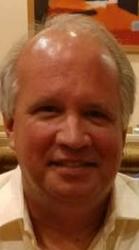Has Haas transitioned from an also-ran to a team to be reckoned with?
The United States isn’t a world leader when it comes to the sport of Formula 1. In fact, the U.S. has been represented only episodically in the sport. Back in the 1970s, the U.O.P. Shadow and Penske units were on the track, but that was followed by a long period of non-representation. Enter Gene Haas in 2014. But, even then, it took time and persistence to assemble a team and get on track.

Gene Haas (photo, RaceFans.net)
The team didn’t have a major sponsor, but it did have sufficient money to get started. The next hurdle was getting parts and engines from a major manufacturer rather than depending on equipment from its own factory, which had been a stumbling block for other American F1 aspirants, including H.R.T., Caterham, and Manor. Haas chose Ferrari, and the Italian unit supplied engines and some parts. Other parts came from Dallara, a company located not far from Maranello. For drivers, the Haas turned to France’s Romain Grosjean, and Mexican Esteban Gutiérrez.
With everything set, Haas Formula 1 took the track in the 2016 season. Both drivers scored points, which was good enough for the team to finish eighth in Constructor’s Championship that year. Denmark’s Kevin Magnussen replaced Gutiérrez for the 2017 season, and the team showed promise at times, but Haas finished the season in eighth place again.
2018 was an improvement year as the team ended the season in fifth place. Rather than build on improvement, though, Haas Formula 1 fell back in 2019–finishing ninth–with headlines made on-track and -off. Halfway into the season, Grosjean and Magnussen were in conflict, and the team experienced an eruptive relationship with its sponsor, the British-based beverage company Rich Energy, headed by the eccentric William Storey. Storey decided to pull the sponsorship because of poor results, but he did so unilaterally without the support of his board. Storey was relieved of his duties, and Haas decided to terminate its tumultuous relationship with Rich.
On-track performance didn’t improve in 2020 with another 9th-place finish as Pietro Fittipaldi took over for Grosjean after the French driver was seriously injured in the Bahrain GP. Grosjean and Magnussen were both replaced for 2021 by Russian Nikita Mazepin and Mick Schumacher, but the team did not score a single point and finished last in the Constructor’s race.
That was only part of the team’s 2021 story. Haas was nearly broke, and that’s how Mazepin came into the picture. Much-needed funding came from his father’s potash company, and a two-year contract came with the Russian flag painted on the car.
Not much was expected from Haas as the 2022 season neared. But then, unexpectedly, an off-track situation–Russia’s invasion of Ukraine–changed everything. The senior Maxepin, Dmitry, is a close associate of Russian President Vladimir Putin. That association and the Russian attack prompted Haas to terminate the Uralkali sponsorship and release son Nikita from the team.
In one way, the timing couldn’t have been worse, coming as it did just before pre-season testing began in Bahrain. But, as fate would have it, the changes started paying off immediately. A big reason is new life came from an old face, Kevin Magnussen, who shifted his schedule from driving in a sportscar event in Florida to traveling to Bahrain for testing.
The result? The shift was evidenced immediately in testing, and success continued in last weekend’s first race, the Gulf Air Bahrain GP. Magnussen placed fifth, Schumacher finished 11th, and their points enabled Haas to rank third behind Ferrari and Mercedes in the Constructor’s Championship race.
Is this the turning point for Haas? It is too early to say, but one thing is for sure: Magnussen and Schumacher could get more points as things go along and might even make podium appearances. Stay tuned: the Haas turnaround could be the biggest storyline of Formula One 2022.














